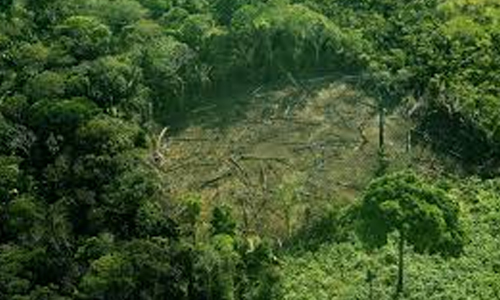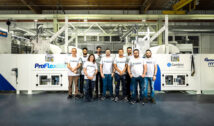
Last week, the scientific journal «the Nature» published an article “Abrupt increase in harvested forest area over Europe after 2015” based on a study by the European Commission Joint Research Centre bioeconomy unit based in Ispra, Italy.
The study claims that there was a significant increase in the harvested forest area in Europe over the recent years and speculates about the reasons and impacts behind such “dramatic increase”.
The conclusion of the researchers is that the increasing demand for forest services and products, driven by the bioeconomy, poses a challenge for sustainable forest management in particular and, more generally, for the EU’s ambition to fight the climate crisis.
Representing an industry based on circular and sustainable forest raw materials, Cepi would like to highlight some important flaws in the study’s methodology and assumptions.
Our intention is to support the development of an EU Forest Observatory that can fast and reliably be used to inform policy and the general public.
- Increased cleared forest area doesn’t necessarily mean that there is any increased wood demand
Why? Satellite imaging can be misleading if not combined with traditional forest inventory on the ground. The “dramatic increase” in forest harvesting as reported by the study is not supported by national statistics in Sweden and Finland where detailed forest inventories have been made for over a hundred years and already combined with digital methods such as satellite images since many years.
Also, satellite imaging can’t accurately establish the reasons for observing a cleared forest area. This could have been caused by the increased calamities such as fires (e.g. in Portugal and Sweden), pests (in the Eastern and Central Europe and South of Sweden) and storms, which have been affecting Europe’s forests over the last years. These calamities often require sanitary fellings which the study is not able to distinguish from normal commercial harvesting.
- Satellite images cannot be used to establish the end use of commercial fellings
Why? The study speculates about the reasons for increased harvesting assuming them to be commercial fellings. If it is already challenging to distinguish with certainty between natural calamities and commercial fellings, it is absolutely impossible to know for what purposes any harvested wood was later used.
As far as our sector is concerned, overall the demand for wood pulp is stable and can’t be a driver for increased harvesting. Pulp and paper volumes have peaked in Europe in 2006 and are not expected to reach those levels any time soon. More than half of fibres for paper in Europe are recycled fibre and recycling continues to increase in paper making.
- Satellite images are not granular enough to establish the state of forest biodiversity, forest carbon sink or ecosystem services
Why? The methodology used doesn’t allow the researchers for such drastic conclusions on the impact of harvesting on carbon absorption, ecosystem services, conservation of biodiversity, soils and water resources. Moreover, the study uses satellite images originally developed for the monitoring of large forest fires, and this technology simply isn’t meant for the purpose of the JRC research.
The Pulp and paper industry has been pioneering in certification and chain of custody systems for three decades now, supporting third party systems such as FSC and PEFC. Meanwhile also best practice in forest management has kept improving and new digital tools are actively used in preserving biodiversity, forest carbon sink and other ecosystem services in forest.
- The study misleads readers by putting forward incorrect, very large numbers
Why? It is telling that not only many mainstream media but even the Nature editorial seem to have misunderstood the study results; the numbers put forward by the study create the wrong understanding that the harvesting rate in Europe is now higher than the growth rate and that our forests are at risk.
In the EU, forest area and the growing stock has been steadily increasing since the middle of the last century when increased planting of forest started and in particular since 1990. These planted forests are now becoming mature. Harvesting in the EU is still less than the annual growth. Harvesting can increase, but as forest is growing more than it is harvested, the growing stock continues to increase. In the EU, harvesting rates are and will be kept sustainable.
- Increased harvesting can go hand in hand with sustainability and climate benefits
Why? The carbon stock in European forests is huge: according to the European Commission, the annual emissions of all motor vehicles in the EU are equal to only 0.03% of the stock. And the stock keeps growing with the sink that is currently equal to 10% of all EU fossil emissions.
This significant accumulation of carbon stock can be maintained for 2050 with active, climate smart forest management. Also the European Green Deal is based on the idea that it needs to preserve forests CO2 sequestration and sink as well as biodiversity but still with the possibility of harvesting wood for economic uses.
There is an untapped potential to sustainably increase raw material provision from sustainably managed European forests. Active, sustainable forest management brings benefits for the future forest resources: forests will be more resilient to changing climate conditions in a context where natural disturbances (e.g. pests, storms, forest fires) are likely to increase.
- Forests can enable achievement of EU Green Deal – but not with passive protection measures
Why? The assumption of the study that forests should be used as passive resources to compensate for fossil emissions in other sectors is questionable, and it falls flat in front of the huge climate challenge. It also leads to the misperception that forests should be turned into fully protected areas, while active sustainable forestry proves to bring greater climate benefits than passive protection.
Our recently published climate effect study explains why fossil CO2 should stay in the ground and not be released to be later compensated by forest sink. Any forest-based low carbon product that can now replace fossil-intensive products has an immediate – and significant – impact in avoided emissions whilst optimising sink in the long term. This has been the recommendation of the UN Intergovernmental Panel on Climate Change (IPCC) since their first scientific reports.

































